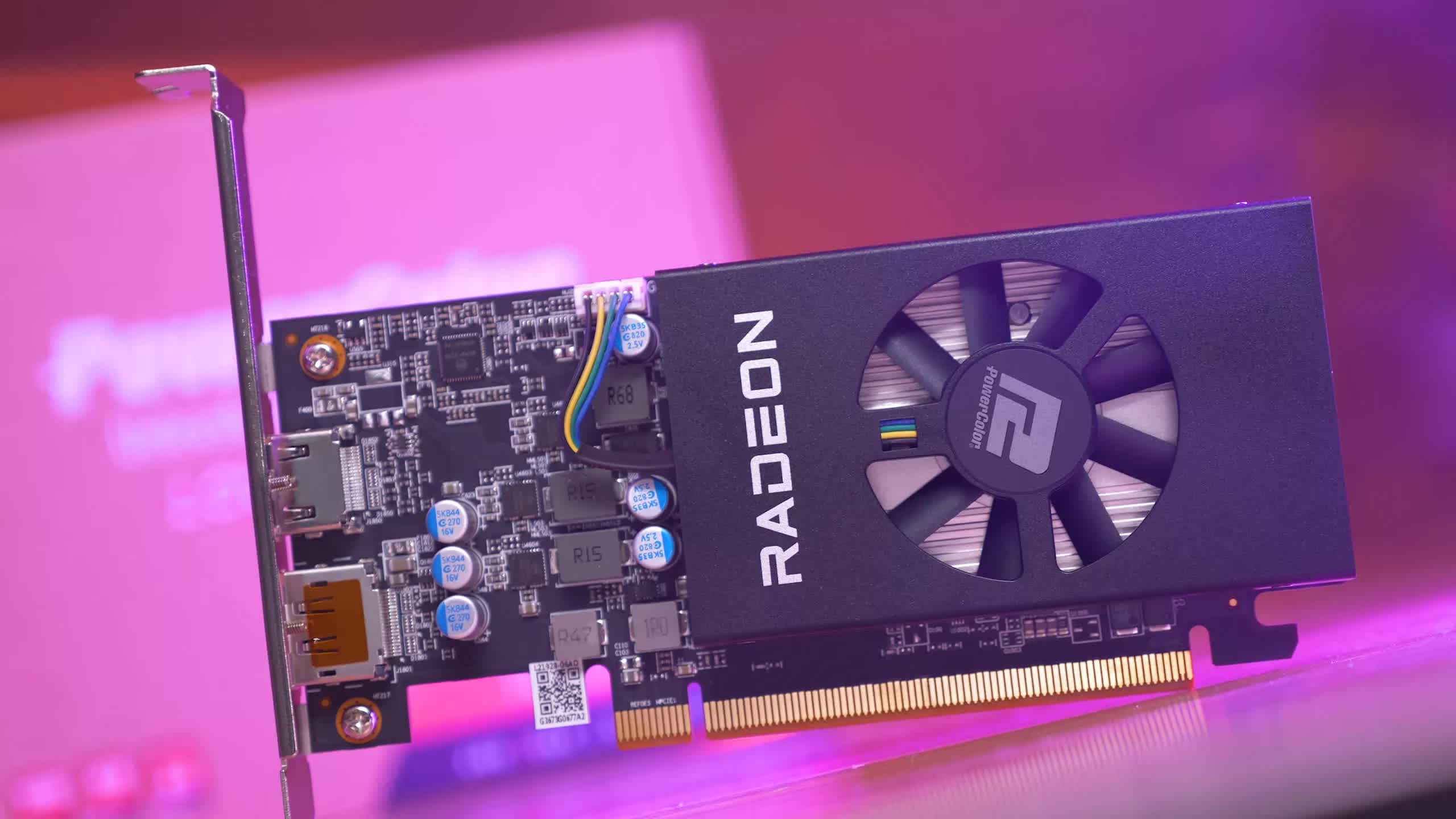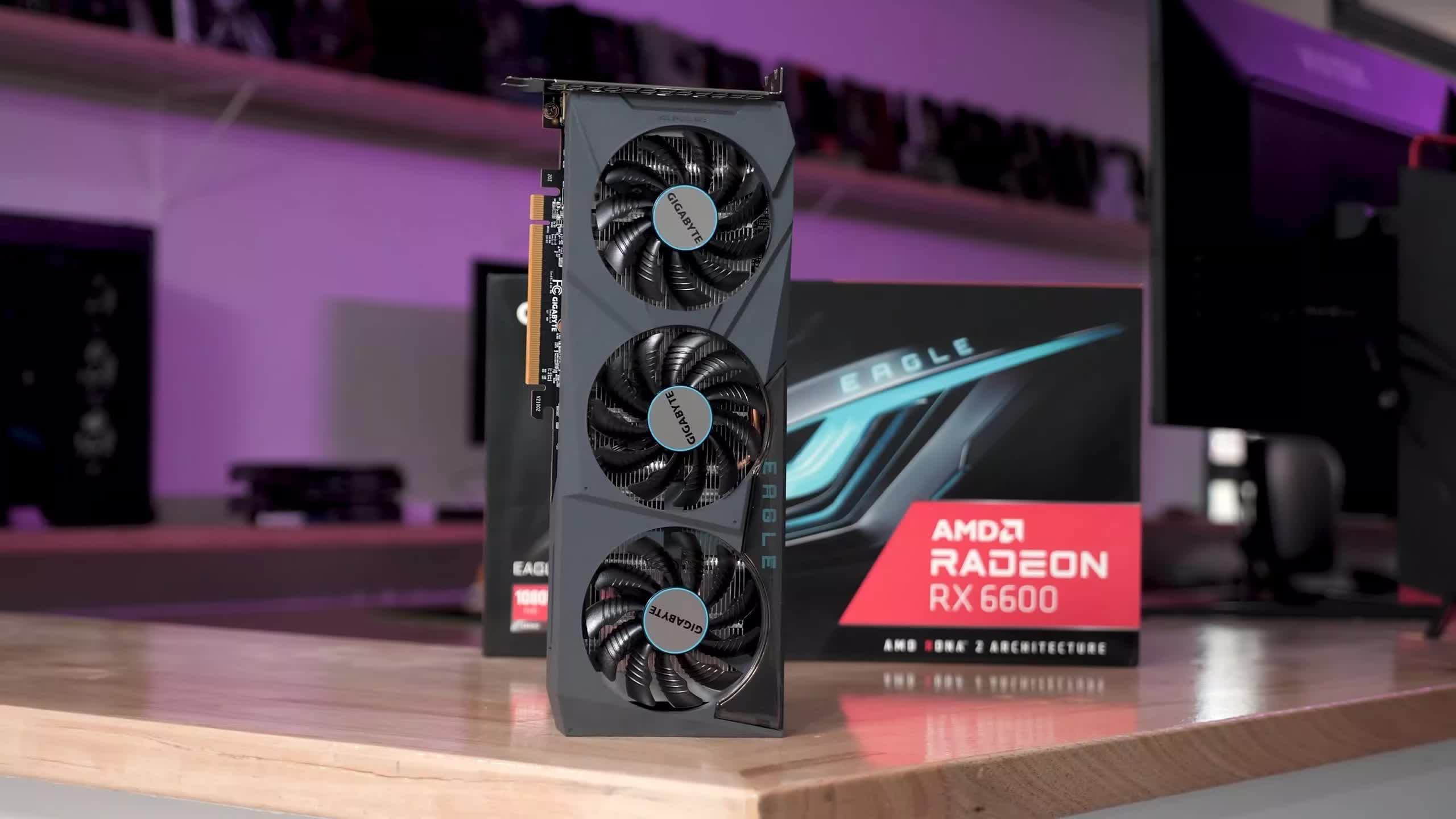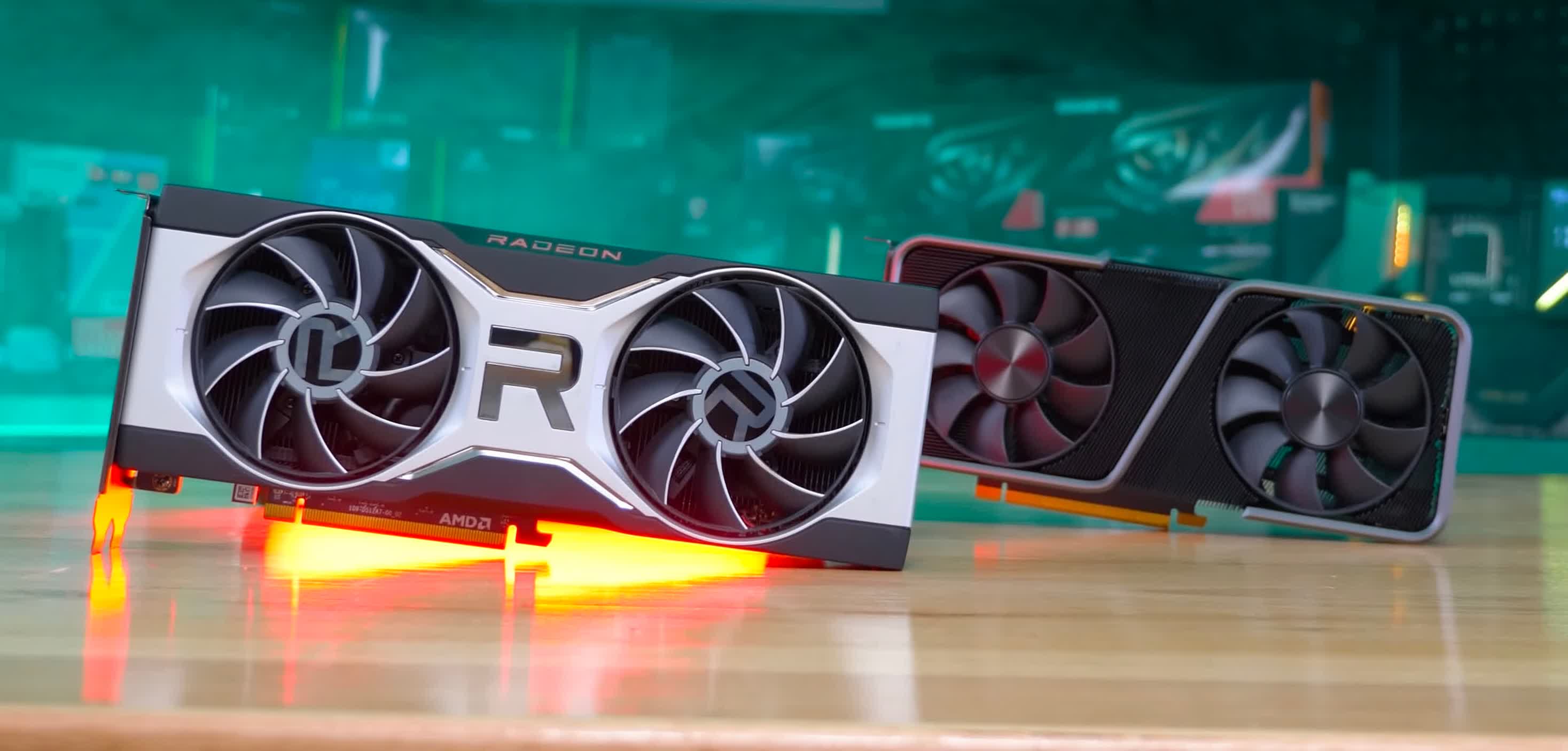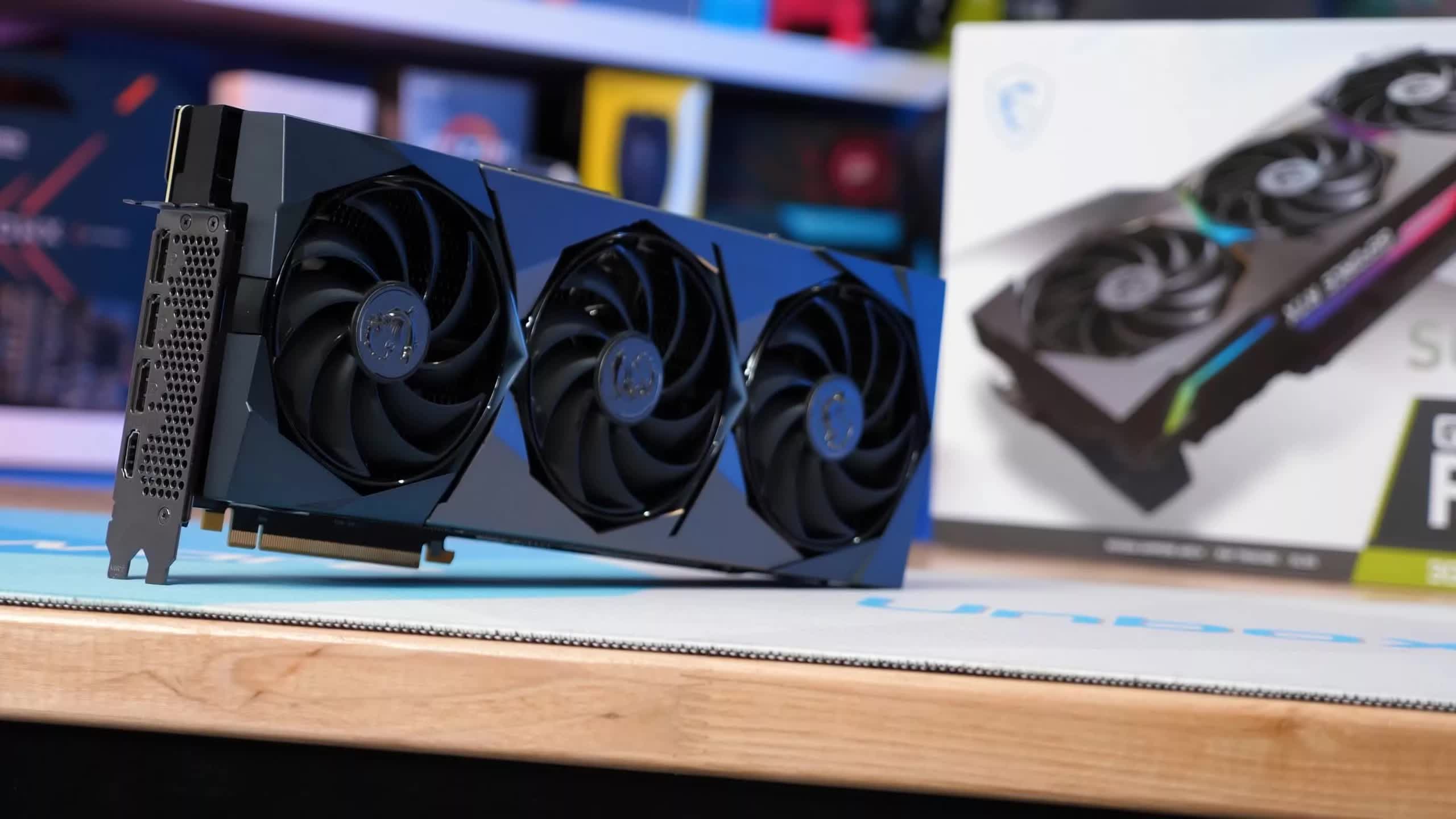See our latest update to this buying guide: The Best Graphics Cards
Our current picks remain up-to-date on the different price brackets, with most emphasis on the $300-400 GPU segment where you can finally get really great mainstream graphics cards for gaming at a good price. Meanwhile, on the higher-end, Nvidia has now launched their next-gen GeForce RTX 4090 and RTX 4080 GPUs but they are overly expensive options. Come December, AMD will counter with RDNA3 GPUs at more affordable prices.
When it comes to graphics cards, we go in-depth. Year in and out we test dozens of GPUs from Nvidia and AMD (hopefully soon from Intel, too) to see which ones are worth your money, and which are dead on arrival.
To make the process of choosing a new graphics card a little easier, TechSpot's Best GPUs guide is intended to answer one simple question: Given a specific budget, which is the graphics card you should buy?
Needless to be said, we're coming off a "dark period" in the GPU market after the mining crypto craze, but the good news is that pricing has slowly but surely going back to normal. To ensure our information is always relevant, we continue to evaluate graphics cards as new games, drivers, and card-specific features are launched.
Entry-level: Spend as Little as Possible
Radeon RX 6400 or GeForce GTX 1650 Super (used)
In months prior, we had tentatively recommended the Radeon RX 6500 XT for this category... by not really recommending it. We identified this was the cheapest new graphics card you can buy, but probably shouldn't. Looking to the second hand market will result in far better options for the same price such as the Radeon RX 570, 5500 XT or GeForce GTX 1650 Super.
As of writing, the 6500 XT still retails for ~$175, an awful price given the performance and lack of features. The typical selling price of a used GTX 1650 Super is $150, so that's still the approach we recommend you take to this segment.
But if you have to buy new, the RX 6400 is a little cheaper and while it's still quite awful and is slower than the 6500 XT (while sharing almost all of its drawbacks), there are some redeeming qualities. First of all, the 6400 is very power efficient and as such there are a number of single-slot / low profile models that don't require external power. Therefore you can throw them in anything with a PCIe slot, making them very flexible.
Bottom line, for anyone after an LP single-slot graphics card, the RX 6400 is a godsend. For everyone else though, the second hand market is your best bet.
The Ideal Entry Point
AMD Radeon RX 6600
You're not getting much for $175 with the 6500 XT as we just established, so what do you need to spend in order to really enjoy today's games at respectable quality settings, while also having enough headroom to be useful for years to come?
For that, the Radeon RX 6600 is currently the go-to option with several models down at $280, which is below the $330 MSRP.
There's no viable alternative from Nvidia at this price point either. Embarrassingly, the RTX 3050 costs more at $330 yet we found the Radeon to be nearly 30% faster in a recent 51 game benchmark.
While we weren't thrilled with the Radeon 6600 upon release, in the current market it has shaped up to be a solid deal with good availability. It's also worlds better than the 6500 XT given it supports more than two display outputs, twice the PCIe bandwidth, twice the VRAM capacity, hardware encoding and AV1 decoding. Basically, it's a proper graphics card.
It also wreaks the RTX 3050 for rasterization performance, so unless the GeForce GPU is at least 20% cheaper than the RX 6600, there's no point buying it.
I Want Moar Performance
GeForce RTX 3060 Ti or Radeon RX 6700 XT
If you're hell bent on buying an Ampere or RDNA2 graphics card and want more performance than what the excellent value the Radeon 6600 offers, what's your best option? In our opinion, there are two viable choices: Nvidia's RTX 3060 Ti and AMD's Radeon 6700 XT.
The Radeon RX 6700 XT was quite a good product at its original MSRP, which used to give the RTX 3070 a run for its money. Today it can be had found just below that old MSRP at $450.
The Radeon 6700 XT delivers ~40% more performance than the 6600, supports the full PCIe x16 bandwidth, and increases the VRAM capacity to 12GB. You're effectively paying a 60% price premium for around 40% more performance, which is why we recommend to go with the RX 6600 if you can, especially with next-gen cards expected later this year.
Our second choice, for about the same price and very similar performance, the GeForce RTX 3060 Ti is readily available across retailers starting at $470. The only advantage the Radeon RX 6700 XT has over the RTX 3060 Ti is the larger VRAM buffer, jumping from 8GB to 12GB. This is an advantage that will serve the 6700 XT in the future, but right now there are few instances where VRAM becomes relevant in terms of raw performance output. The RTX 3060 Ti, on the other hand, supports DLSS and better ray tracing performance, which may be a key advantage depending on the games you play.
Going beyond these two, you'll be paying significantly more for an RTX 3070 or 3070 Ti.
Best Value High-end Graphics Card
GeForce RTX 3080 12GB or Radeon 6900 XT
It's a tough decision to spend big bucks on a new high-end GPU. For months we've been recommending buyers avoid high-end GPUs and hold out as we've witnessed GPU pricing continue to fall for several months now. For example, on May the lowest price for the RTX 3080 Ti was $1,200, today it's down to $930. That means the 3080 Ti has dropped by 23% in the last 3 months, and we've observed something similar for all high-end GeForce GPUs. We've also seen high-end Radeon GPUs fall in price, the 6900 XT by just over 10% and the 6800 XT by 14%.
We anticipate pricing to fall even further, maybe not massively, but combine that with the fact that we're expecting new GeForce RTX 40 and Radeon 7000 series GPUs to land later this year.
Nvidia GPU Pricing Trends (eBay Average Sale Price)
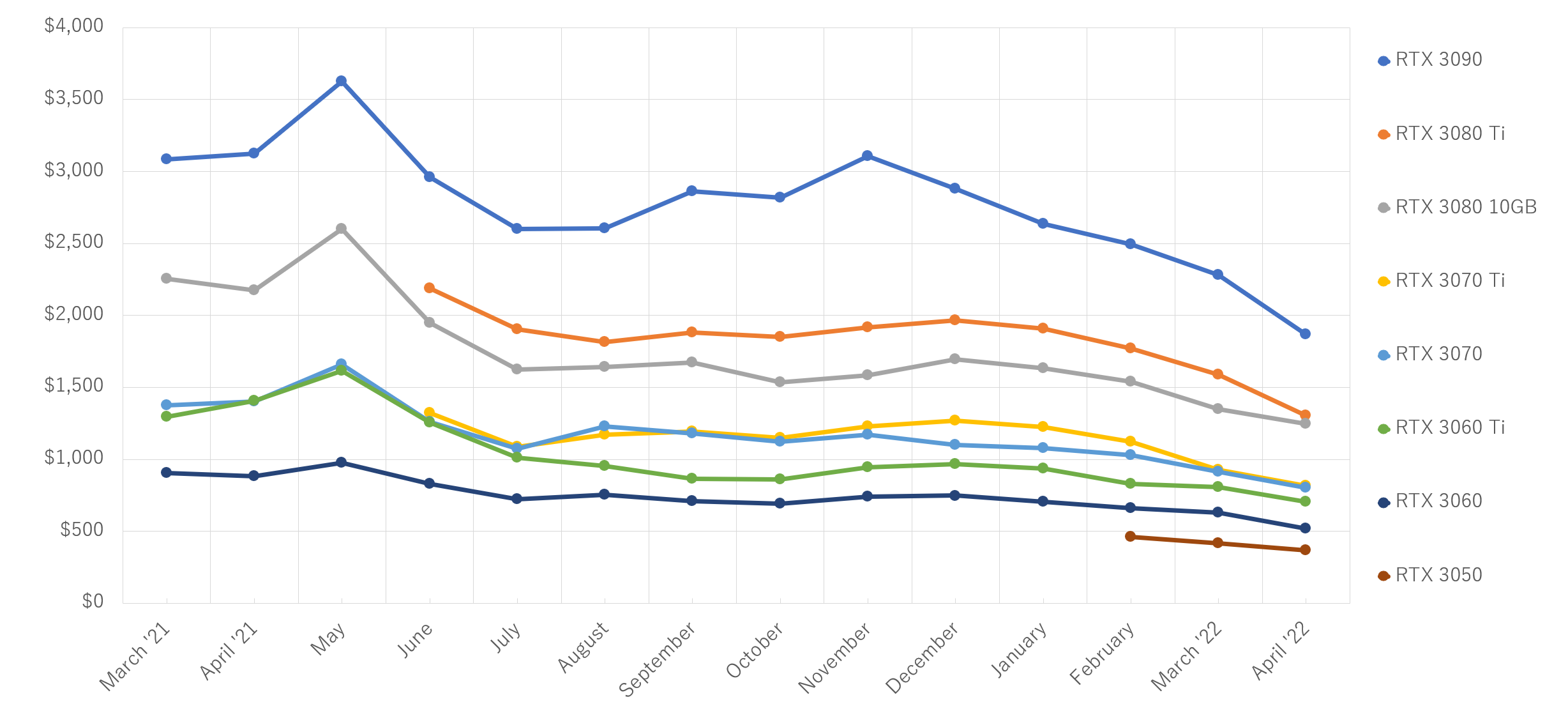
We believe high-end next gen GPUs will be here before year's end, offering significant performance gains and as a result, that will push down pricing of current inventory even further. Spending $1,300 on an RTX 3090 is a tough sell even if it's well under MSRP. The Radeon RX 6900 XT isn't that tempting at $850 either, though it does offer the most value of the current generation high-end offerings.
The GeForce RTX 3080 12GB is also a good option as surprisingly it's a little cheaper than the original 10GB model. For about $800, it's even cheaper than the 6900 XT while offering a similar level of performance.
Closing Notes
Whether you should buy or not right now will ultimately depend on your unique situation. What we do know is that the Radeon RX 6600 is unlikely to get much cheaper over the next few months, and it's already affordable for what it offers. It's a solid 1440p graphics card that can play all the latest games using modest quality settings.
If you are set on buying now to wait for next-gen cards, you stand to lose no more than ~$100 on the mid-range Radeon, as right now they're selling second hand for at most $50 below retail on eBay. Buy high-end though and you could easily lose $200+ before year's end, making it a more expensive short term investment. In that sense, the RTX 3080 12GB and 6900 XT are more sensible options that should see less of a price drop from this point forward.
Speaking of next-gen GPUs, there's almost no chance AMD RDNA3 and Nvidia RTX 40 Lovelace won't sell out almost instantly. This has been the norm for decades now. What will be interesting is what demand looks like two or three months after release and we suspect those who exercise a little constraint will end up with a better deal, rather than missing out entirely, which is what happened for the current generation.

